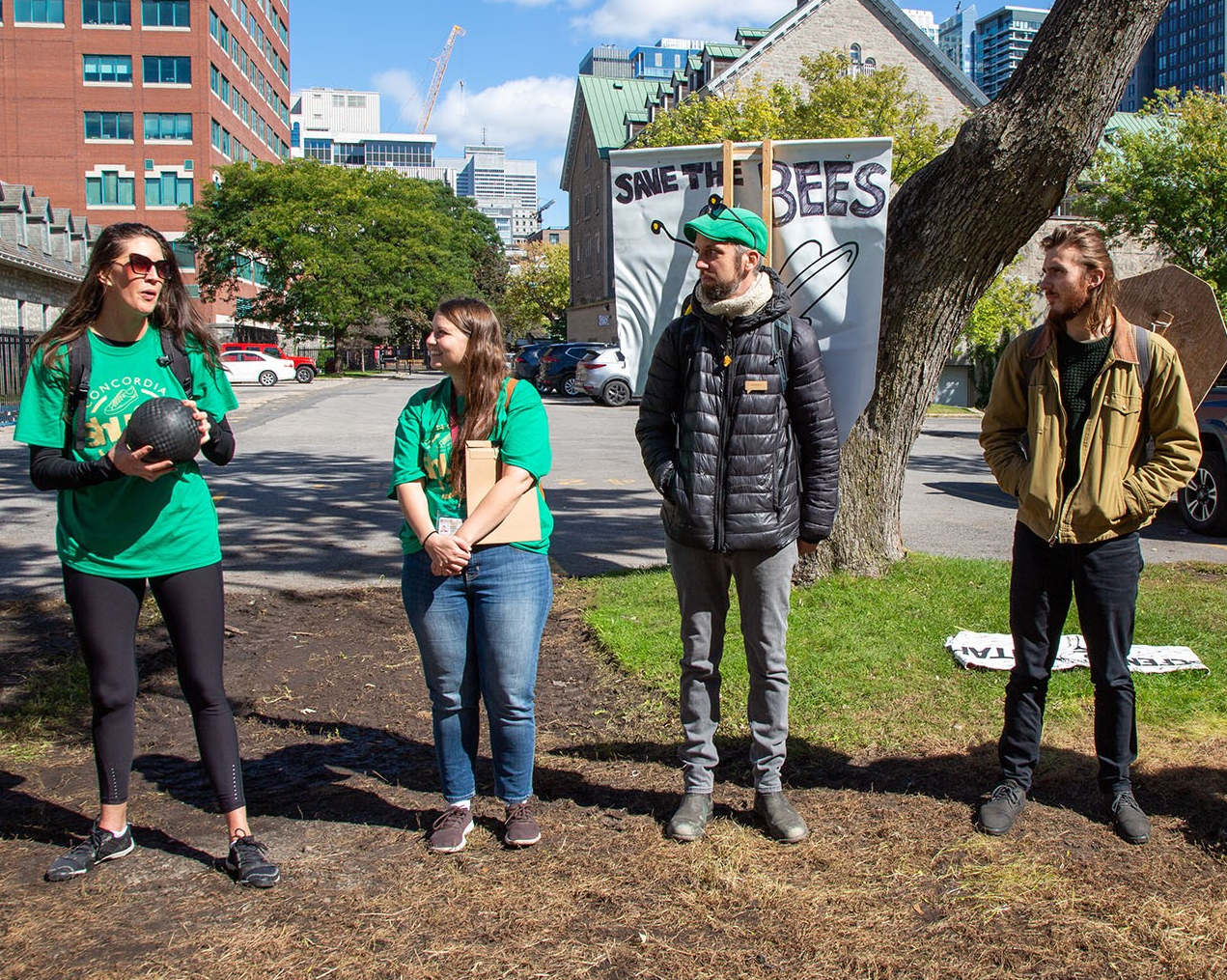$63M Applied Science Hub opens for research on Concordia’s Loyola Campus
 Concordia's Applied Science Hub Building was designed by Menkès Shooner Dagenais LeTourneux Architects and NFOE, specialists in sustainable development.
Concordia's Applied Science Hub Building was designed by Menkès Shooner Dagenais LeTourneux Architects and NFOE, specialists in sustainable development.
Concordia University’s Applied Science Hub was officially opened today on the university’s Loyola Campus, in the Montreal neighbourhood of Notre-Dame-de-Grâce.
The $63.1-million state-of-the-art facility — built thanks to $36.7 million in support from the Government of Canada and the Government of Quebec — was strategically designed to enable interdisciplinary collaboration and research between faculty and students in the Faculty of Arts and Science, Gina Cody School of Engineering and Computer Science as well as the District 3 Innovation Centre.
The virtual opening ceremony included remarks from both William Amos, Parliamentary Secretary for the Government of Canada’s Minister of Innovation, Science and Industry and Danielle McCann, Minister of Higher Education for the Government of Quebec.
“Not only will this facility encourage interdisciplinary collaboration and foster innovation,” says Amos. “It will also help train a generation of Canadian workers, a workforce able to tackle real-world challenges in our communities.”
McCann spoke of the Quebec government’s pride in contributing to the creation of the Applied Science Hub and added, “The credit goes entirely to your team, which has set up a structuring and stimulating project and which will become, I am sure, a model of its kind for all Quebec universities.”
- WATCH: A 70-second, five-floor visit of the LEED Gold-certified Applied Science Hub, the fourth high-performance green building at Concordia, whose footprint also includes a public sculpture by renowned Quebec City artist Marc-Antoine Côté.
“This opening marks a big step in the evolution of our research capacity,” says Concordia President Graham Carr. “The Applied Science Hub will be a major nexus of transdisciplinary collaboration, where industry actors, startups and entrepreneurs partner with our graduate students and faculty on next-generation research. This is a decisive moment for Concordia as a research university engaged in innovative work for the benefit of society.”
- WATCH: Concordia President Graham Carr celebrates the official opening of the Applied Science Hub.
Paula Wood-Adams, vice-president of Research and Graduate Studies at Concordia says partnerships were key in bringing this project from blueprint to building. “Without the assistance of the Government of Canada and the Government of Quebec, this milestone for our university would not have been possible. We thank our federal and provincial partners who generously invested $36.7 million in support of our students and researchers.”
“These new facilities are the result of extraordinary collaboration between departments within Concordia and experts outside the institution,” says Michael Di Grappa, vice-president, Services and Sustainability at Concordia. “The resulting construction of a fourth LEED-certified building on campus is a fitting setting for the innovative research that will be conducted within the Hub.”
Roger Côté, outgoing vice-president, Services, concurs. “The opening of the Applied Science Hub comes as a retirement gift of sorts,” says Côté. “I want to thank the many team members who successfully transformed the vision of our researchers to create spaces that facilitate collaborative work on research at the leading edge of a variety of fields.”
The Applied Science Hub houses laboratories and research equipment supporting fields such as agriculture, health and sustainable development. Onsite researchers work in areas ranging from aquatic biology through microscopy, cellular imaging and nanoscience to bioprocessing, and chemical and materials engineering.
Nanoscience
The opening of the Applied Science Hub has also created a form-fitted home for the new Centre for NanoScience Research (CeNSR). Its co-director, John Capobianco, professor in the Department of Chemistry and Biochemistry and Concordia University Research Chair (CURC) in Nanoscience (Tier I) celebrates the move.
“The hub will allow for not only more interactions between faculty members, but principally with the students from the other groups,” Capobianco explains. “We are spanning a very broad range of research, all based on the nanomaterials we develop.”
Research done at the nanoscience level involves materials 100,000 times smaller than the diameter of a human hair. The newly acquired transmission electron microscope (TEM) will allow researchers to examine fine detail of the nanomaterials — even as small as a single column of atoms.
- WATCH: Professor John Capobianco from the Department of Chemistry and Biochemistry, Concordia University Research Chair in Nanoscience; and associate dean, Planning and Academic Facilities for the Faculty of Arts and Science.
Chemical and Materials Engineering
Supported by more lab and office space, this department will have the capacity to tackle new research projects that address our post-carbon world, among other things.
For example some research avenues include the use of organic battery materials, fighting cancer and stabilizing vaccines.
- WATCH: Professor Alex De Visscher, chair of the Department of Chemical and Materials Engineering.
Biology and Entrepreneurship
The building is also the site of District 3’s new BioHub, a first of its kind in Canada, where early stage scientific entrepreneurs will be given access to programs, networks and facilities allowing them to transform research findings into market-ready innovations.
“At District 3, we are building the back end for a burgeoning bioeconomy through collisions with talent, research, government and industry. Our vision is for Quebec and Canada to be global leaders in this revolution,” says Xavier-Henri Hervé, founder and executive director of District 3.
- WATCH: Xavier-Henri Hervé, co-founder and executive director of the District 3 Innovation Centre.
- WATCH: Professor Adrian Tsang from the Department of Biology and director of Concordia’s Centre for Functional and Structural Genomics.
- WATCH: Professor Dylan Fraser, a professor in the Department of Biology and Concordia University Research Chair in Biodiversity and Conservation.
The Applied Science Hub Building was designed by Menkès Shooner Dagenais LeTourneux Architects and NFOE, specialists in sustainable development.


